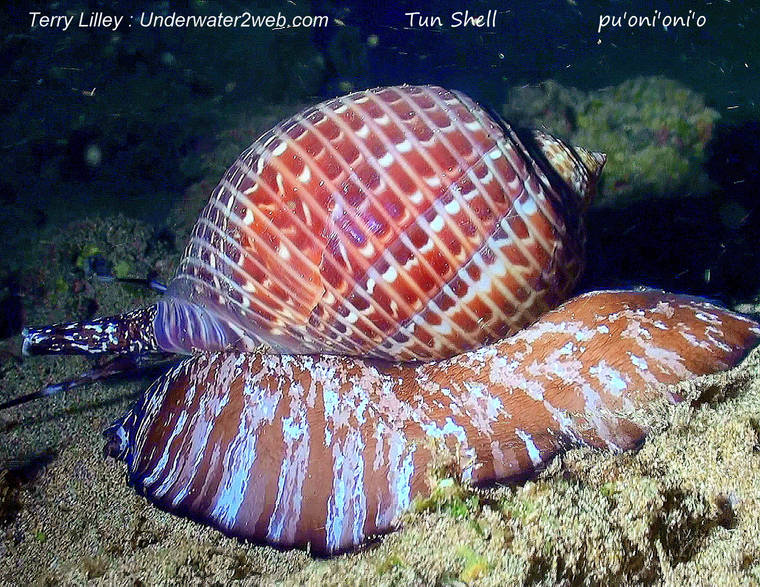This beautiful marine snail has a shell that is six inches long but the body of the snail can be a foot wide! Its body is so big that it cannot fit it entirely into its protective shell. This is very odd for marine snails like the cowry or cone shell that can retract their bodies fully into their hard shells for protection.
This beautiful marine snail has a shell that is six inches long but the body of the snail can be a foot wide! Its body is so big that it cannot fit it entirely into its protective shell. This is very odd for marine snails like the cowry or cone shell that can retract their bodies fully into their hard shells for protection.
When I first saw the tun shell out snorkeling at night time I was amazed at how big it was and how fast it could move across the coral reef and sand. I touched the body of the snail thinking it would contract into its shell, but it did not, as it just instantly buried itself in the sand and completely disappeared! It turns out that this is normal for pu‘oni‘oni‘o and during the day they normally sleep under the sand and then come out at night to feed on sea cucumbers.
The tun shell is very thin, and they often get crushed in the surf, so they like to stay in shallow, calm lagoons.
Walking down the beach you can often see pieces of their brown paper-thin shells that have ridges across the shell. These are growth rings so one can tell how old a live tun shell is by counting its ridges, much like tree growth rings.
The tun shell has an elongated head on top of its body. The head acts as a mouth, anus, sensors and an opening to suck in sea water to breathe with its internal gills. The way the shell grows allows pu‘oni‘oni‘o to keep growing its entire life time! Many coldblooded creatures never stop growing, so the largest ones are the oldest ones. They eventually die by getting a disease, killed by storms or eaten by a predator.
You can see the tun shell in action in the movie “The World’s Guide To Hawaiian Reef Creatures” at underwater2web.com, and also follow the marine life Instagram post at terry.lilley
Aloha from under the surf!
•••
Terry Lilley, a marine biologist, lives in Hanalei. His websites include underwater-2web.com and www.gofundme.com/5urrm4zw.



